Sampling and Analysis Plan Resources - Pathogens
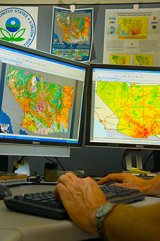
Following a wide-area release (intentional or unintentional) of an environmentally persistent pathogen, remediation of contaminated areas might be required to protect human health and the environment. In order to collect the data necessary to assess the efficacy of remediation efforts following a microbiological contamination incident, a well-defined and thorough sampling and analysis plan (SAP) needs to be developed and implemented. The resources below are applicable for developing SAPs needed for site characterization, verification sampling, waste characterization sampling, and post decontamination sampling stages of sampling and analysis activities for a microbiological contamination incident in which the EPA would be responsible. The resources are also applicable to development of SAPs for research studies and exercises related to microbiological contamination incidents.
Sampling and Analysis Plan (SAP) Template Tool and User Guide
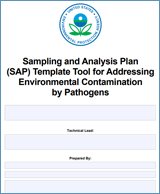
The Template Tool and corresponding User Guide are provided to facilitate generation of an outline that can be used to develop sampling and analysis plans (SAPs) in support of exercises, research studies or remediation activities following an environmental contamination incident involving pathogens.
Sampling and Analysis Plan (SAP) Template Tool
Sampling and Analysis Plan (SAP) Form Template Tool using ArcGIS Survey123 and User Guide
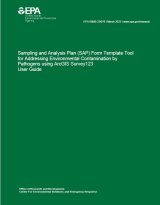
This Form Template Tool and corresponding User Guide are provided for use with ArcGIS Survey123 to facilitate the generation of sampling and analysis plans (SAPs), with incorporated data quality objectives (DQOs) that are needed for collection and analysis of samples to support remediation activities (such as site characterization, verification sampling, waste characterization, and post decontamination sampling) following an environmental contamination incident involving pathogens. Downloading the PDF is required to access the form template tool.
Sampling and Analysis Plan (SAP) Form Template Tool
Considerations for Developing Sampling and Analysis Plans
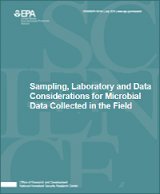
Summarizes elements that should be considered when planning, developing and implementing a SAP including lines of evidence, field sampling, laboratory analyses and reporting, and data quality assessment and interpretation.
Sampling, Laboratory and Data Considerations for Microbial Data Collected in the Field
Understanding Detection Limits within the Current Interim Clearance Goal for Bacillus anthracis Contamination
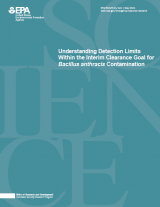
This report summarizes available sampling and analysis method ranges of recovery efficiency, limit of detections, and false negative rates for environmental matrices and analysis methods which were used to illustrate their effects on the interpretation of sampling results in regard to clearance decisions.
